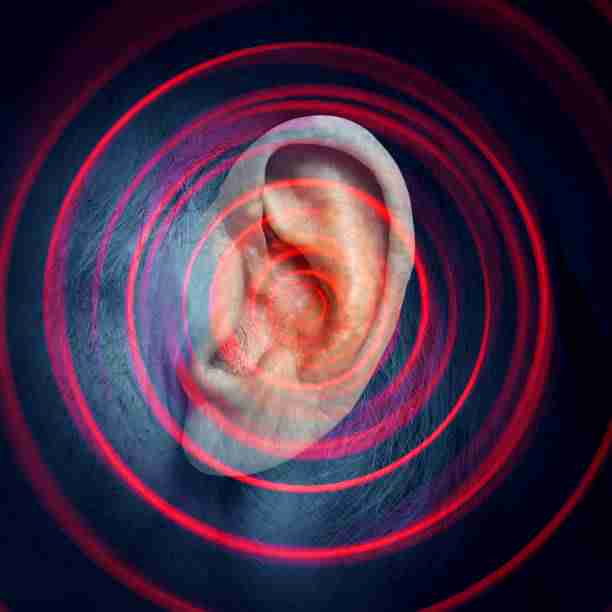
For many veterans, tinnitus and migraines are two conditions that can significantly impact their daily lives. Tinnitus, a condition that causes ringing or buzzing in the ears, and migraines, a type of headache disorder, can be challenging to manage on their own. However, migraines secondary to tinnitus can become even more challenging when these conditions coincide.
This article will explore the connection between migraines secondary to tinnitus and how veterans can seek proper compensation and treatment options. We’ll discuss the most common medical conditions where migraines are secondary, examples of headache disorders with tinnitus, and the specific symptoms that can impact veterans’ cognitive function and quality of life. We’ll also cover the VA disability rating and veterans’ steps to prove a secondary service connection.
Finally, we’ll provide tips and strategies for managing your symptoms, such as lifestyle changes, alternative therapies, and medications. We’ll also discuss the importance of working with a qualified medical professional and a VA accredited law group like VetsForever or a VSO (Veterans Service Organization) to ensure veterans receive the proper care and support they deserve.
What is a VA Secondary Condition?
As a veteran, a service-connected condition can result in a disability or disease that wasn’t initially caused during service. However, because the service-connected condition led to the disability, the VA offers benefits through a secondary service connection process.
Secondary service-connected claims and requests for increased ratings are among the most common types of claims that the VA receives for compensation. In the case of migraines secondary conditions to tinnitus, tinnitus is the primary service-connected condition, and migraines are the secondary condition.
In straightforward terms, a secondary service-connected disability is a disability that arises from a pre-existing service-related disability. As a veteran seeking disability compensation, it’s crucial to understand the intricacies of secondary service connection. Doing so can maximize your chances of receiving the benefits you deserve for any disability resulting from your service-connected condition.
What is a VA Secondary Condition?
Tinnitus is associated with several types of headache disorders, including migraines. A recent study found that veterans with tinnitus had a higher prevalence of migraines than those without the condition. Additionally, the study found that veterans with both tinnitus and migraines had higher rates of depression, anxiety, and post-traumatic stress disorder (PTSD) compared to those with only tinnitus or migraines.
Some of the most common medical conditions that can cause migraines include:
- (TBI) Traumatic Brain Injury
- Post-Traumatic Stress Disorder (PTSD)
- Neck Injuries
- Hormonal Changes
- and Hypertension (high blood pressure)
In addition to these symptoms, veterans with migraines secondary to tinnitus may experience other symptoms, including:
- Depression
- Anxiety
- Sleep Disorders
- and Autoimmune Disorders
- Sensitivity To Light and Sound
- Nausea
- Dizziness
- Difficulty Concentrating
- Irritability
- Fatigue
Are Migraines the Only Headaches the VA Recognizes for Disability Ratings?
No, migraines are not the only headache disorder that can occur alongside tinnitus. While migraines are the most commonly associated type of headache with tinnitus, they are not the only type that can occur together. Other headache disorders that may be secondary to tinnitus include:
- Tension Headaches, characterized by a dull ache or pressure around the forehead or the back of the neck.
- Cluster Headaches, severe headaches that typically occur on one side of the head and can cause stabbing or burning pain.
- and Trigeminal Neuralgia Headaches cause intense, shooting pain in the face and can be triggered by everyday activities like eating or talking.
According to a 2017 study on the connection between tinnitus and headaches, tension headaches were less prevalent in individuals with tinnitus than migraines. The study revealed that only 13% of the participants reported experiencing tension headaches.
Cluster headaches are neurological headaches typically occurring on one side of the head. Although tinnitus is not a common symptom of cluster headaches, studies have found that people who experience tinnitus are more likely to develop cluster headaches.
What is the VA Rating for Migraine Headaches Secondary to Tinnitus?
The VA disability ratings are determined by the headaches’ frequency, severity, and duration and how the symptoms impact the veteran’s work, life, and social functioning. Veterans can receive a disability rating of 0%, 10%, 30%, or 50%, depending on the severity of their condition. For instance, a veteran may receive a 10% rating for a tinnitus VA rating but could qualify for a higher rating for migraines secondary to tinnitus.
The VA has specific guidelines for rating migraines under code 8100 in CFR 38, Part 4, the Schedule for Rating Disabilities. In 2022, the migraines VA rating scale consisted of four possible ratings, ranging from 0% to 50%.
What Do I Need to Prove for VA Secondary Service Connection?
To prove a secondary service connection for migraines and tinnitus, veterans must show a medical nexus between the primary and secondary conditions to tinnitus. A medical nexus links the two conditions, indicating that the secondary condition results from the primary condition. A Nexus letter for migraines secondary to tinnitus from a medical professional can help establish this link and strengthen the Tinnitus VA rating.
What Is A Nexus Letter?
A Nexus Letter is a crucial document used to support a veteran’s disability claim. It should include four essential elements to be effective:
- First, list any supporting evidence reviewed by the doctor, such as medical or personnel records, to comprehensively understand the veteran’s condition.
- Secondly, the letter should offer to support evidence-based rationales, such as scientific journals or previous BVA case law precedent, to describe the medical etiology of the veteran’s condition. This is vital in establishing a showing of causation for service connection.
- Thirdly, a strong medical opinion should be given using one of five likelihood statements, with “more likely than not” being preferable.
- Lastly, the doctor’s credentials, including their job title and specialty, must be listed, along with their signature and date, to demonstrate the letter’s credibility and competence for rating purposes.
Do I Need A Nexus Letter to Help Prove Secondary Service Connection?
While a nexus letter is not required to prove a secondary service connection, it can help strengthen the VA disability claim. A nexus letter is a statement from a medical professional linking the primary and secondary conditions.
It’s essential to work with a qualified professional, such as a VSO, who is knowledgeable about VA disability claims and understands the requirements for a nexus letter.
How Is A VA Claim For Tinnitus Denied?
Common reasons for VA claim denial include insufficient medical evidence, lack of a clear medical nexus, and failure to meet the criteria for a service-connected condition. Providing as much medical evidence and information as possible is essential to support the claim.
To receive a higher VA rating for migraines, it’s essential to provide medical evidence documenting the severity of your headaches and their impact on your daily life, including whether they are debilitating and affect your ability to work. Additionally, documenting the frequency and severity of your migraines over several months can strengthen your claim.
One effective way to document your migraine symptoms is to use a smartphone app such as Migraine Buddy. This app allows you to track the frequency and intensity of your headaches and any accompanying symptoms like nausea or sensitivity to light and sound.
You can then download the daily and monthly reports the app generates to support your VA disability claim for headaches. Veterans can also work with VetsForever to help navigate the claims process and improve their chances of receiving a fair and accurate rating for migraines secondary to tinnitus.
Treatments for Tinnitus
There are various non-pharmacologic and pharmacologic treatments available to manage tinnitus. Certain patients may benefit from lifestyle modifications, such as following a low-salt diet and avoiding alcohol or caffeine. Using white noise machines or fans can also help reduce the impact of tinnitus on one’s quality of life. Habituation Retraining Therapy (HRT) or Cognitive Behavioral Therapy (CBT) are effective forms of non-pharmacologic treatment that can help alleviate symptoms.
Certain medications, such as long-acting benzodiazepines, may also decrease the intensity of tinnitus. Discussing the treatment options with your doctor is important to determine the most effective for your needs.
Summary
In conclusion, living with the painful effects of migraines and tinnitus can be a significant challenge for veterans, mainly when these conditions occur together. Symptoms such as sensitivity to light and sound, nausea, dizziness, and difficulty concentrating can significantly impact cognitive function and overall quality of life.
As a result, seeking the correct diagnosis and effective treatment is essential for veterans with migraines secondary to tinnitus. This involves understanding the VA disability claims process and working with qualified medical professionals and legal representatives to ensure that proper compensation is received.
With the right resources and support, veterans can learn to manage their symptoms and cope with the challenges of living with these conditions. Taking action is critical to receiving the help and support you deserve, so don’t hesitate to seek assistance today.

